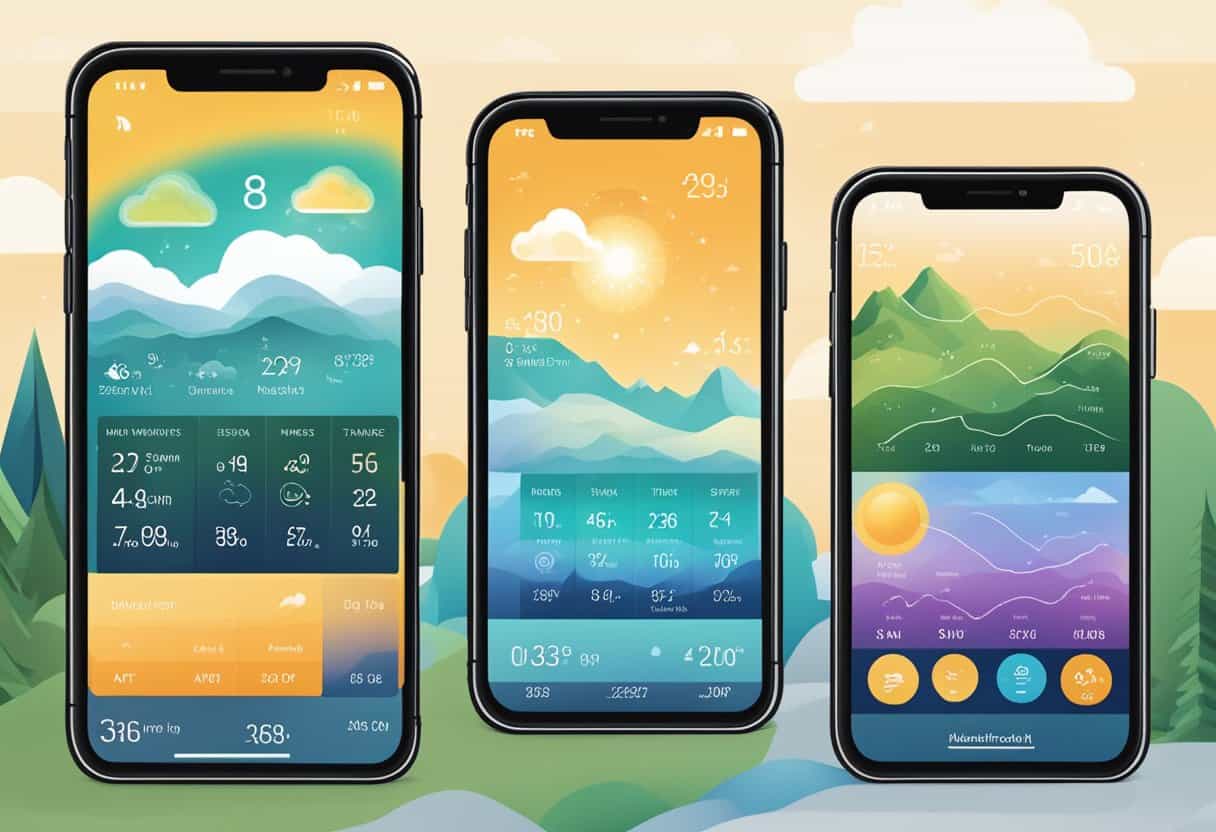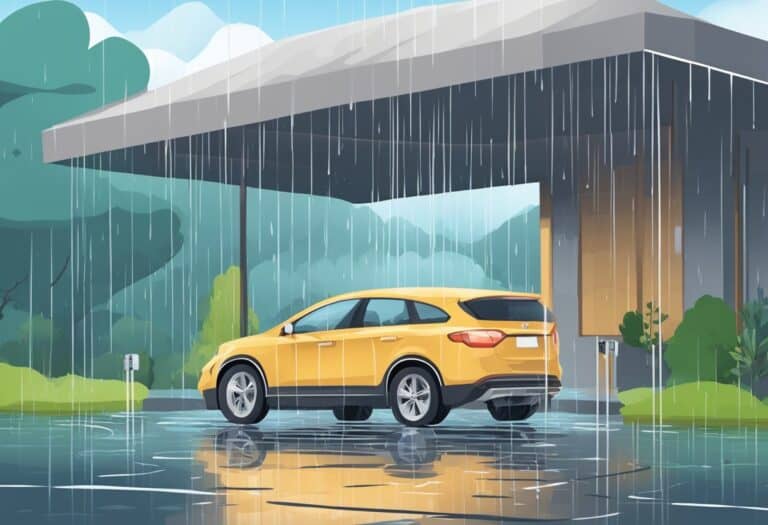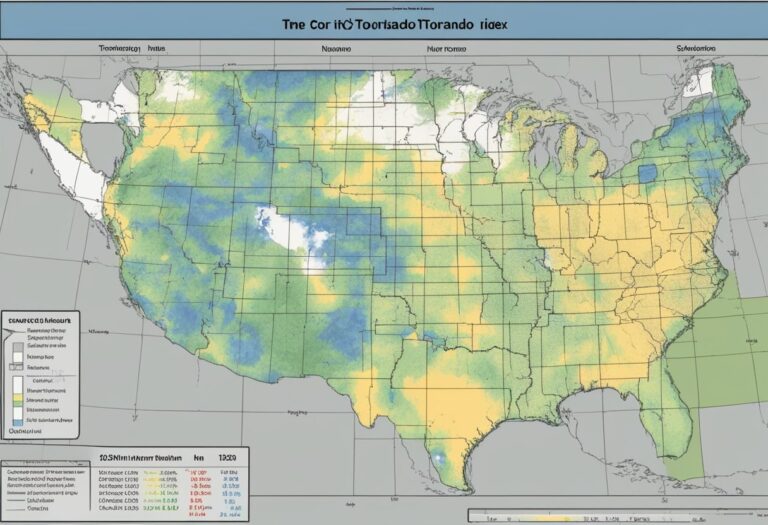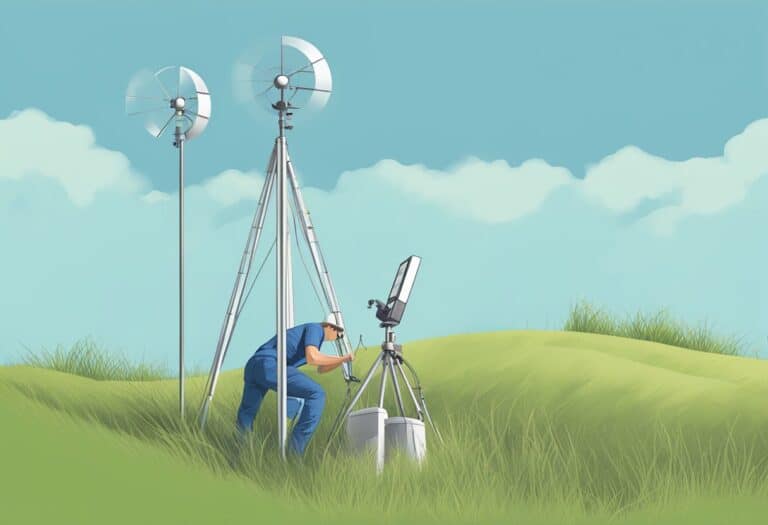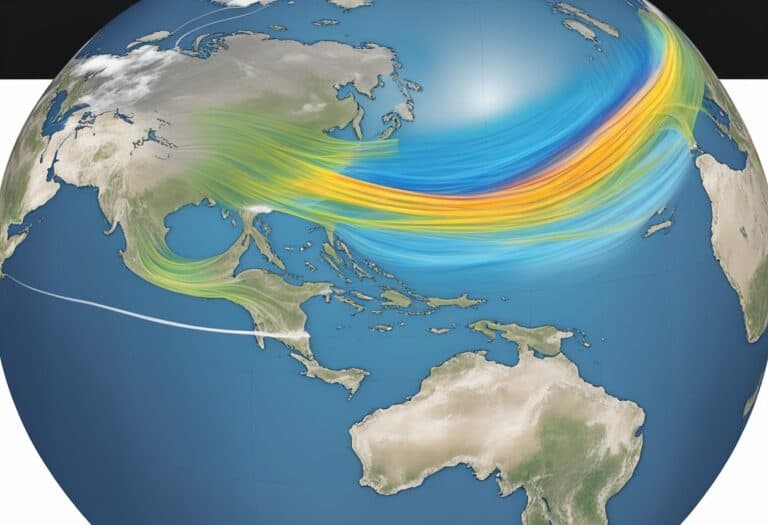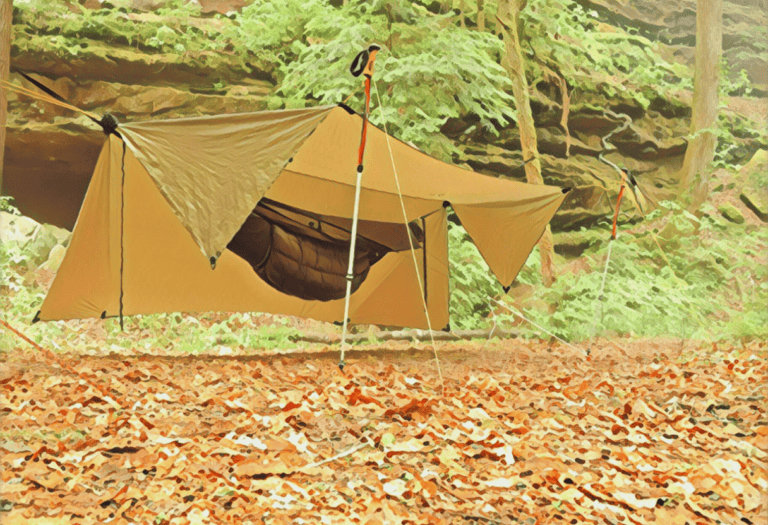When seeking the most accurate weather app, it’s essential to understand that weather prediction is a complex discipline that blends meteorological data with sophisticated algorithms.
The accuracy of a weather app can be the deciding factor in planning your day or preparing for severe weather conditions. An ideal app offers you reliable forecasts, real-time updates, and detailed data that can help you make informed decisions.
Accuracy in weather apps is achieved through the integration of comprehensive data sources, including satellite imagery, radar observations, and weather station reports. High-quality apps typically utilize these inputs to provide forecasts that are both precise and location-specific.
User experience is also paramount, as the best weather apps present this array of information in an accessible and user-friendly format, ensuring you can easily navigate and interpret the weather data that is most relevant to your needs.
The most accurate weather app, prioritizes data sources, reliable forecasts, and user-friendly interfaces. Top apps like AccuWeather, The Weather Channel, and Dark Sky are known for precision, with features like daily and hourly forecasts, precipitation predictions, and interactive radar maps. The most reliable app for you depends on your specific needs and preferences.
Core Features of Accurate Weather Apps
When selecting a weather app for accurate forecasts, prioritize certain core features to ensure you’re getting the most reliable information. Your weather app should offer a comprehensive daily forecast as well as an hourly forecast, giving you insight into the weather patterns for the entire day or for the next few hours.
A high-quality weather app will also provide precipitation forecasts. It will clearly depict the likeliness of rain or snow, accompanied by information on expected accumulation. Ensuring your weather app includes an interactive radar map allows you to visually track storm systems and understand the intensity of incoming weather.
Current weather conditions are essential, providing real-time updates on temperature, humidity, wind speed, and more. Moreover, anticipate enhanced functionality through animations which add clarity to weather changes.
Here is a succinct list of features for easy reference:
- Daily and Hourly Forecasts: Understand general trends and imminent conditions.
- Precipitation Forecasts: Anticipate rain or snow and its potential impact.
- Current Weather: Stay informed with up-to-the-minute data.
- Radar Map: Gain a visual perspective with layered information on weather systems.
- Animations: Visualize complex weather patterns simply.
Seek out weather apps that incorporate these elements. Apps which build upon usability and user-centered design principles not only provide richer information but enhance the overall user experience. For example, discussion on the incorporation of usability in weather apps is explored through studies such as “Towards an enhanced user experience with smart phone weather alert applications”.
Remember, the more comprehensive the features, the more equipped you are to plan your day confidently with the help of your chosen weather app.
Top Weather Apps and Their Reliability
When choosing a weather app, you prioritize accurate forecasts and timely alerts. The most reliable weather apps deliver a blend of live data, expert meteorological analysis, and local weather conditions to ensure you have the information you need.
AccuWeather
AccuWeather is renowned for its Superior Accuracy™, offering detailed forecasts that extend up to 15 days in advance. With its RealFeel Temperature® feature, you get not just the numbers, but how the weather actually feels outside.
The Weather Channel
The Weather Channel provides comprehensive weather updates and is known for its dependable severe weather alerts. Its forecasts are enhanced with interactive maps and Weather Channel’s meteorologists’ expertise.
Dark Sky
Dark Sky‘s hyper-local weather information makes it standout for its minute-by-minute forecasts. Although Apple acquired Dark Sky, its precision in short-term weather predictions is still accessible.
CARROT Weather
CARROT Weather combines humor with weather forecasting, but don’t let its wit fool you; the app is serious about providing accurate weather data. Its personality-packed interface is matched by reliable predictions.
RadarScope
For weather enthusiasts and professionals, RadarScope offers detailed radar data that helps you analyze storms like a pro. This app is ideal for those who value detailed radar imagery and are willing to pay for top-tier information.
Weather Underground
Weather Underground leverages a vast network of personal weather stations to deliver hyper-local forecasts. Its strength lies in community-sourced data that contributes to its accurate neighborhood weather predictions.
Apple’s Weather App
The Apple’s Weather App, integrated into iOS devices, offers a clean interface and weather information sourced from a variety of providers, including the recently acquired Dark Sky. It’s a reliable choice for everyday users seeking convenience and accuracy.
Each app is fine-tuned to provide you with the most accurate and reliable weather information possible, but the best weather app for you can depend on your specific needs and preferences.
User Experience and Interface Design
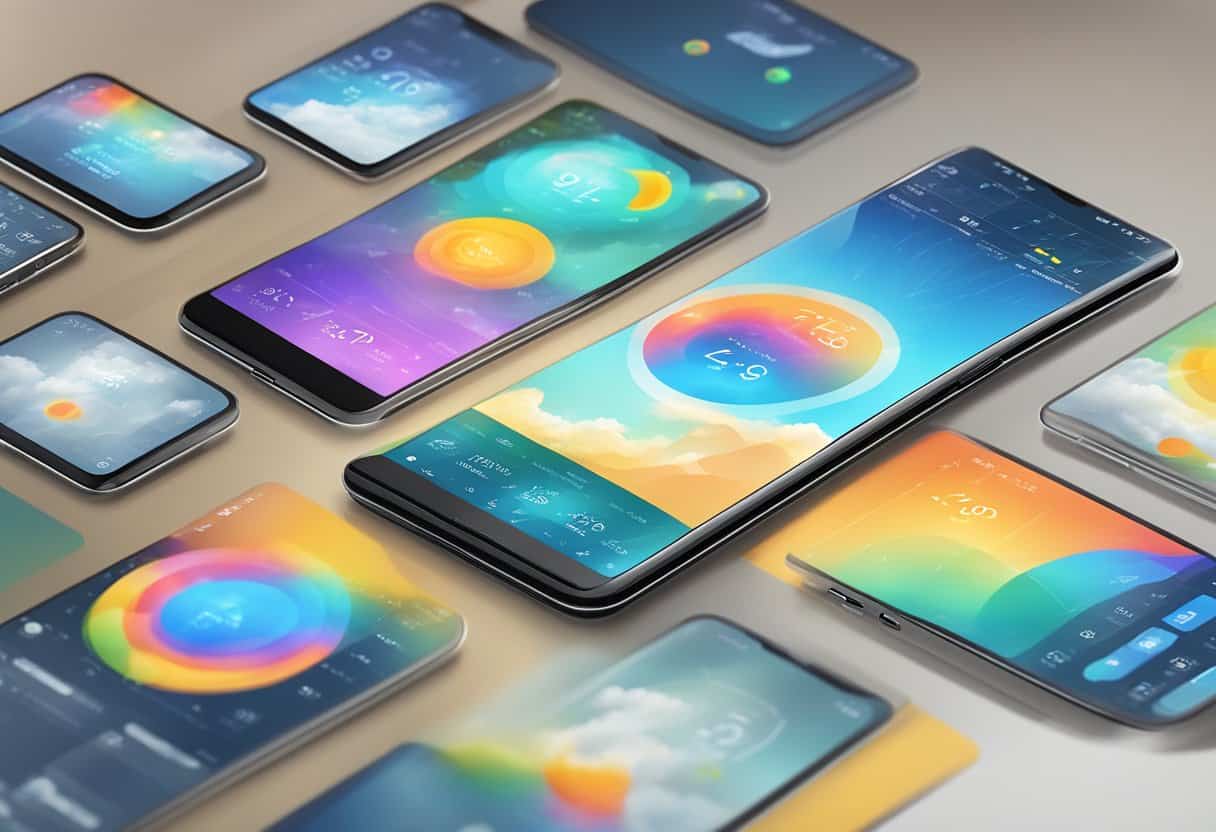
When choosing a weather app, the interface design significantly impacts your user experience. A well-designed app presents weather conditions in a clear and intuitive layout, allowing you to find the information you need at a glance. An optimal design should include:
- Ease of Navigation: Access to comprehensive weather data through a few taps.
- Visual Clarity: Bold typography and icons that are easy to read and understand.
- Interactive Elements: Real-time updates with scrollable maps to track weather systems.
The features contributing to robust user experience encompass:
- Customizable weather alerts: You should receive notifications
tailored to your preferences and location. - Severe weather alerts: These are critical and should be prominent,
ensuring you’re informed and safe during extreme conditions. - Notification Settings: Adjust frequency and types of notifications
to avoid being overwhelmed by less critical updates.
Remember, the purpose of the interface is to serve your needs effectively without unnecessary complexity. Applications utilizing user-centered design cater to your requirements for consistent and accurate weather updates. For instance, with the integration of eye-tracking technology, an app can improve readability and usability, adapting to how you naturally interact with your device. An application designed with a focus on usability and a user-centered approach will likely enhance your experience by making critical information accessible and actionable.
To benefit most from a weather application, look for one that carefully considers the balance between comprehensive data and a non-cluttered, user-friendly interface.
Platform Availability and Device Integration
When choosing the most accurate weather app, it’s essential to consider both platform availability and how well it integrates with your devices. Most reputable weather apps offer extensive compatibility with a range of devices and operating systems.
Android and iOS
For smartphone users, the two leading platforms are Android and iOS. The best weather apps are usually available for both, ensuring you have access whether you’re using a Samsung phone on Android or an iPhone. You can download these apps from the Google Play Store or Apple App Store respectively.
Apple Ecosystem
If you’re ingrained in the Apple ecosystem, look for apps that offer additional features on Apple Watch, iPad, and even Mac. This seamless integration allows you to receive real-time updates across all your devices. For instance, a weather alert can ping your iPhone and Apple Watch simultaneously.
Device Integration
- Smartphones: Touchscreen interfaces with widgets for quick overviews.
- Apple Watch: Glanceable information and haptic feedback for alerts.
- iPad: Enhanced graphics and detailed weather maps due to larger screen.
Weather apps that support “cross-platform” functionality score higher in terms of integration as they allow you to sync your preferences across different devices. Apps that provide custom notifications tailored to the unique functionalities of your devices, such as geo-location alerts on your phone or pressure system updates on your Apple Watch, offer you a comprehensive weather-tracking experience.
To sum up, your chosen weather app should work effortlessly across multiple devices, ensuring that you stay informed no matter which device you’re using.
Frequently Asked Questions
When choosing a weather app, you seek reliability and accuracy. These FAQs dive into specifics to help you identify the app that meets your needs best.
Which weather app offers the most precise predictions for rainfall?
For precise rainfall predictions, Dark Sky is often recognized for its hyper-local weather updates, which are particularly accurate in the short-term forecasting of precipitation.
What is the top-rated weather app across different platforms?
Across various platforms, The Weather Channel app consistently ranks highly for its comprehensive features and user-friendly interface, offering detailed weather forecasts and alerts.
How reliable are free weather apps compared to paid versions?
Free weather apps provide basic weather forecasts that are generally reliable, but paid apps like RadarScope offer more advanced features, such as real-time radar data, which can improve the precision for enthusiasts and professionals.
Which is considered the most dependable weather app for Apple devices?
For Apple devices, the CARROT Weather app is lauded for its accuracy and unique personality, delivering weather updates with a twist of humor.
Can the accuracy of weather apps vary by location, and if so, which performs best regionally?
Yes, weather app accuracy can vary by region. Some apps, like AccuWeather, are known to perform well globally, offering tailored forecasts based on your location.
What do user reviews suggest about the precision of weather forecasts by popular apps?
User reviews often highlight Windy for precise weather forecasts, especially for its detailed wind and weather mapping capabilities praised by users interested in outdoor activities.

